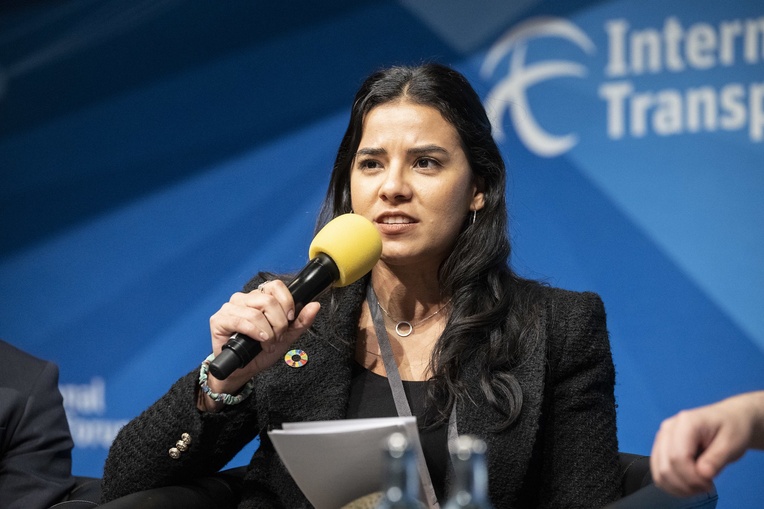Leipzig, Germany – Last week, 25 May, YOURS – Youth for Road Safety Projects Director Raquel Barrios participated during the International Transport Forum 2023 in a panel on “How Safer Roads Can Boost Economy”. Raquel joined the Head of the Global Road Safety Facility and Global Lead of Road Safety from the World Bank Said Dahdah, World Health Organization (WHO) Head of Safety and Mobility Nahn Tran, Chief Innovation Officer of ERTICO-ITS Europe Johanna Tzanidaki, and president of Bolt Jevgeni Kabanov.
The session covered practical strategies on how to make roads safer for people. The speakers also analyzed the associated economic and societal benefits of road safety. It examined the potential of addressing road safety holistically with shared responsibility among all stakeholders as envisaged in the Safe System Approach.
As an introduction, Raquel talked about how road traffic crashes are the leading killer of young people worldwide. She discussed how YOURS, through capacity development, advocacy opportunities, and youth mobilization, empowers youth to positively impact and influence policies and decision-making efforts around road safety and sustainable mobility.
During the panel, she was asked about quality of life and freedom as a part of new mobility options that address some “newer needs” of the younger generation. To respond, Raquel elaborated on the need for better road facilities such as pedestrian lanes, which vulnerable road users like young people often use.
“Youth are part of the vulnerable road users. To take them from one place to the other, what they normally use is pedestrian facilities, so that’s the thing that I would prioritize. [This will] not only bring safety to them but also bring growth in the economy, giving more access to commercial facilities, for example. The other angle would be public transportation, of course. That’s something that is needed, especially in low-and-middle-income countries [but] we need to make sure that it’s safe, affordable, and accessible for the younger generation.”
She highlighted the importance of creating multisectoral and multidisciplinary collaborations between government agencies, civil societies, youth and youth organizations, the academe, and more. “Whenever we are putting investment on the Safe System and on the roads, we have this multidisciplinary approach that is needed at the end of the day, that’s how our society is composed.”
She explained that it was also crucial to identify where the current mobility system is lacking, especially regarding the current global situation. She encouraged stakeholders and leaders to consult road users and ensure that their voices are considered before decisions on investment and system redesigning are made.

When talking about educating road users, Raquel brought up how often questions on ‘educating youth’ arise because of their perceived behavior. She explained that there needed to be a paradigm shift from blaming youth as road users to engaging with them as assets who have ideas for solutions. “At the end of the day, they’re users of the system.”
Johanna Tzanidaki added to this by saying that young people are often not the people driving the cars but are part of the road users who walk and cycle. “Young people are more into shared mobility, the apps that are taking us into this multi-modal reality which is, by many statistics and a lot of research, safer than the vehicles,” – Johanna.
To end, Raquel talked about the necessity to align the concepts of different stakeholders so that everyone involved can “address the topic in the right way”. She added that we need to “include road safety as a core value.”

